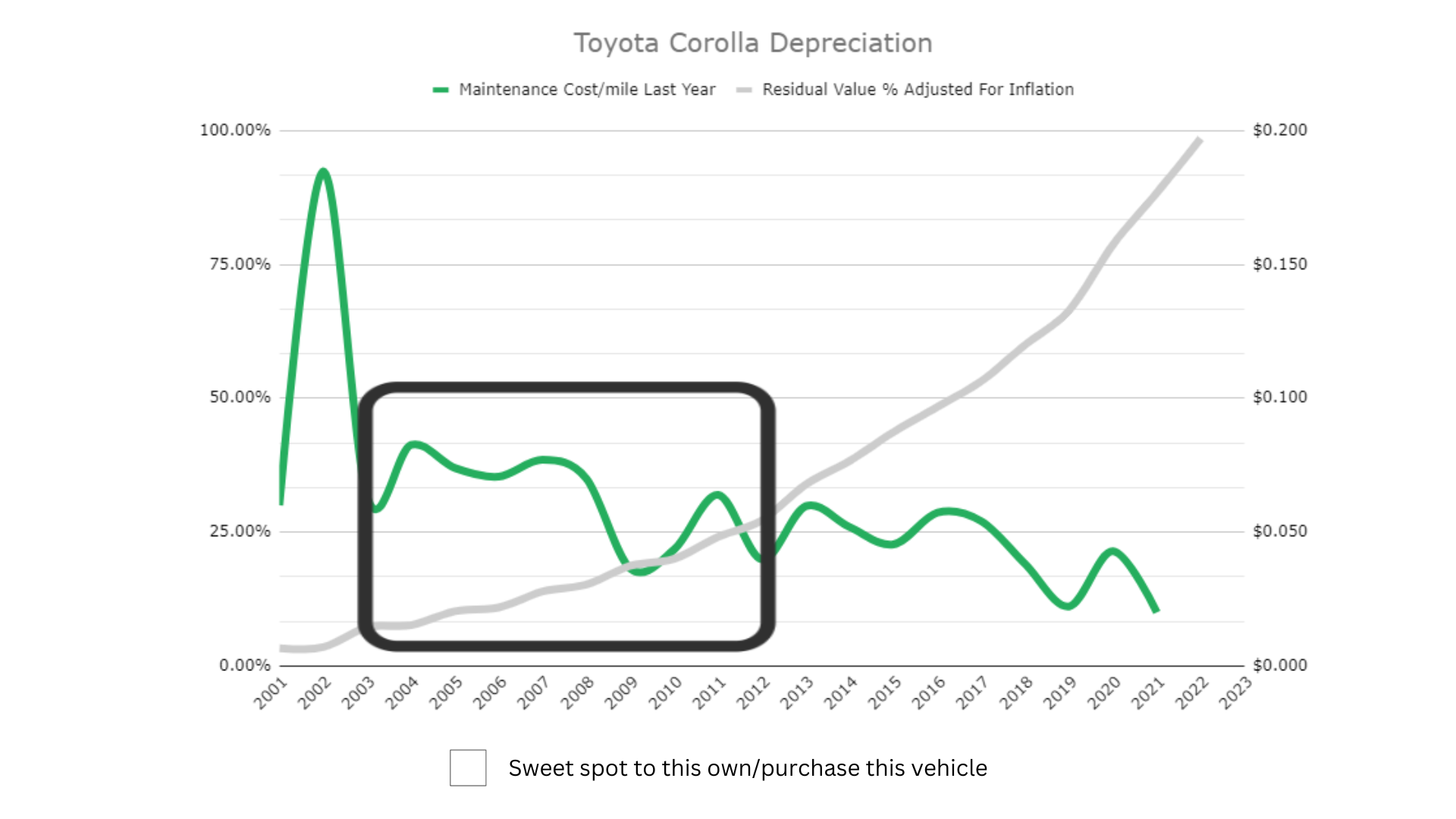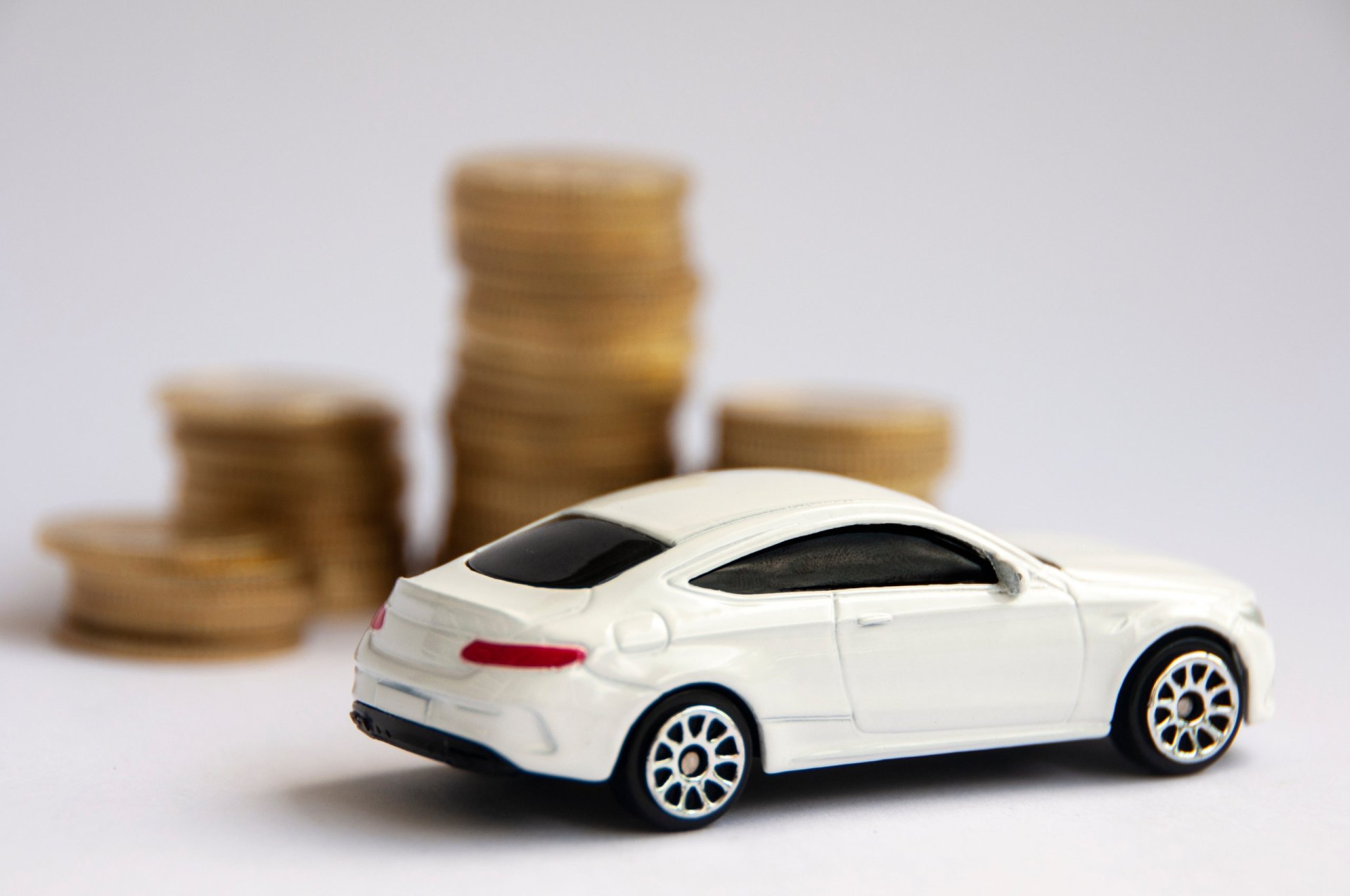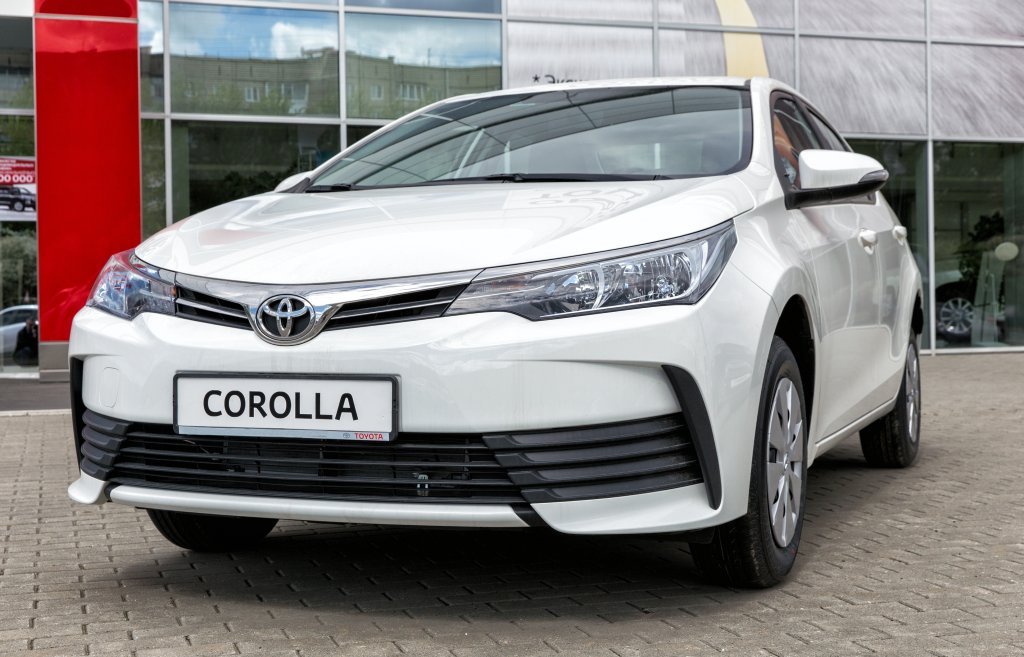Find the depreciation rate of your Toyota Corolla in the graph below.

Every vehicle depreciates or loses value, beginning the moment you purchase it. The Toyota Corolla is no exception to this rule. The greatest depreciation occurs during the first year of ownership. After those first 12 months, the Corolla will depreciate at a slower rate each year until it reaches the eight-year mark. Different makes and models of vehicles depreciate at varying rates. That’s why learning the depreciation rate of a specific vehicle can help you determine its long-term value and total cost of ownership.
Keep in mind that just because the vehicle costs the least to own in the sweet spot we have outlined here, you still may not want to own the vehicle during these depreciation sweet spot years. Although vehicles depreciate less as they get older, they have more repairs. Duh right? However, keep in mind that repairs don’t just cost you money, they cost you time. Reliability is the difference between being able to make it to your destination on time or missing an opportunity because the car broke down.
Check out our article on the best and worst years of the Toyota Corolla to see our reliability ratings for all years of the Corolla between 2001-2021. We also cover MPG, safety ratings, and a number of other factors. We pulled data from Corollas registered in our app and surveyed owners to get you data-backed answers on just how good or bad each year of the Corolla is.
If you want to know the depreciation and maintenance costs for your particular vehicle, use our free “Total Cost of Ownership” tool available in the FIXD App – Android or IOS.
If you like our online tools and articles consider purchasing our FIXD sensor for $19.99 (this is 67% OFF). It’s our flagship product. With it, you scan your car for common engine problems.
If our sensor detects any problems with the engine, our app will clearly explain:
- What could have caused it and
- How much the possible repairs may cost.
If you’d like, we’ll even show you trusted repair shops in your area where you can get your ride fixed through RepairPal. The total cost of ownership feature within the app totals your maintenance costs, repairs, and depreciation (Sensor + App). This is free on the app.
Toyota Corolla Depreciation
| Model Years | Mileage | Amount Depreciated | Residual Value Percentage | Resale Value |
| 2001 | 264,000 | $16,224.78 | 3.3% | $546 |
| 2002 | 252,000 | $16,423.34 | 3.5% | $600 |
| 2003 | 240,000 | $17,596.38 | 7.2% | $1,368 |
| 2004 | 228,000 | $17,748.85 | 7.6% | $1,455 |
| 2005 | 216,000 | $17,257.53 | 10.2% | $1,970 |
| 2006 | 204,000 | $17,541.62 | 10.9% | $2,152 |
| 2007 | 192,000 | $17,456.79 | 13.9% | $2,821 |
| 2008 | 180,000 | $17,567.89 | 15.2% | $3,154 |
| 2009 | 168,000 | $17,887.76 | 18.7% | $4,106 |
| 2010 | 156,000 | $17,402.17 | 20.0% | $4,341 |
| 2011 | 144,000 | $16,761.24 | 24.1% | $5,329 |
| 2012 | 132,000 | $16,089.28 | 27.2% | $6,024 |
| 2013 | 120,000 | $14,685.79 | 33.9% | $7,522 |
| 2014 | 108,000 | $13,753.27 | 38.3% | $8,526 |
| 2015 | 96,000 | $12,655.76 | 43.7% | $9,814 |
| 2016 | 84,000 | $11,674.27 | 48.4% | $10,967 |
| 2017 | 72,000 | $10,730.83 | 53.2% | $12,209 |
| 2018 | 60,000 | $9,275.22 | 60.0% | $13,897 |
| 2019 | 48,000 | $7,807.12 | 66.4% | $15,400 |
| 2020 | 36,000 | $5,158.60 | 78.7% | $19,032 |
| 2021 | 24,000 | $2,701.26 | 88.4% | $20,636 |
| 2022 | 12,000 | $313.95 | 98.5% | $21,239 |
| 2023 | 0 | N/A | N/A | N/A |
| 2024 | 0 | N/A | N/A | N/A |
This chart describes the approximate depreciation for a Toyota Corolla. It’s based on Kelley Blue Book data since 2001, assuming a vehicle in a standard trim, a generic color such as black or white, and a mileage of 12,000 per year.
Keep in mind that the auto market was heavily affected in 2020 and beyond. Automakers selling new cars during the COVID pandemic raised prices which caused a spike in demand in the used car market as people tried to save money. Many automakers, however, did not drop prices after the pandemic, they kept them so they could make a larger profit.
This is why the most recent years of many vehicles have seemingly experienced less depreciation. Some, such as the 2005, 2007, and 2010-2022 models may have even appreciated due to the heightened levels of inflation created.
Factors That Impact the Toyota Corolla Depreciation Rate

Toyota has a reputation for building quality, reliable vehicles that are made to last. Among all Toyota vehicles, the Corolla is one of the brand’s most popular cars, consistently achieving high sales yearly. The Corolla offers plenty of desirable features at affordable prices, and it comes with good safety ratings. These factors may result in slower depreciation rates than other comparable vehicles. Here are some other factors that can impact the depreciation of your particular Corolla.
Age
When shopping for a used Corolla, you may hear the term “model year” often. The model year refers to the car’s generation and pricing, not necessarily its manufacture date. As you may have guessed, cars depreciate with age. Typically, a vehicle depreciates more quickly in the first few years of ownership, and then this rate may slow down.
The model year of a Corolla can also tell you about its features, safety ratings, and reliability scores. Automakers release new versions of their cars each year, making subtle updates or major changes to keep pace with other brands. Once an automaker releases a new model year, the previous year depreciates. Some changes, such as new safety features, can affect the depreciation rate for a specific model year. That’s why some years are better to purchase than others.
Body Type
Body type, also known as body style, is the classification of a vehicle based on its shape and size. The most common body styles include sedans, coupes, hatchbacks, sports cars, minivans, vans, station wagons, sport utility vehicles, and pickup trucks. Usually, pickup trucks and SUVs depreciate slower than other body types because of the high demand for these vehicles in the North American market. On the other hand, luxury cars tend to depreciate the quickest.
The Toyota Corolla is a compact car that comes in sedan and hatchback body styles. Typically, vehicles in this class depreciate faster than pickups and SUVs. That may change if market trends swing toward higher demand for sedans and hatchbacks. In that case, vehicles in this segment may depreciate more slowly.
Mileage
Like its age, a vehicle’s mileage can be another crucial factor in its depreciation. An average person drives around 1,000 miles or more each month, so we base our model on 12,000 miles of driving per year. If you drive more than this average, your vehicle may have greater wear and tear due to increased use. This may lead to a higher depreciation rate. If you drive less than the average, however, the lower mileage may increase your car’s value.
Overall Condition
Your vehicle’s overall condition covers its mechanics and appearance, including the interior and exterior. A well-maintained vehicle will usually be worth more than a vehicle that’s in poor condition. Routine maintenance, such as oil changes and tire rotations, can help protect your car’s overall condition. It can also minimize the wear and tear your vehicle experiences. If you follow the Corolla’s maintenance schedule, take care of the car, and drive it safely without causing major damage, you may get more for the car when you sell it.
When considering your car’s maintenance, it’s also important to recognize that there may be a time when it’s cost-prohibitive to preserve or repair the vehicle. At some point, fixing or maintaining the vehicle may cost more than it’s worth. That’s when it’s a good idea to trade in or sell the vehicle for a new one, so you’re not investing money in a car that won’t offer a high return.
Color
Did you know that even a vehicle’s color can affect its depreciation rate? It’s true. According to a study by iSeeCars, colors such as yellow, orange, and green have slower depreciation rates, on average, compared to other vehicle colors. That’s because there are fewer vibrant-hued cars on the road. According to the study, popular colors such as white, blue, and gray have average depreciation rates.
Some vehicle colors, including black, brown, and gold, may experience quicker depreciation because they’re more widely available than other colors. You can consider the color to improve the resale value of the Toyota Corolla you purchase.
Other Costs of Toyota Corolla Ownership
The Corolla’s depreciation rate is one cost of owning this vehicle. Here are some other costs to consider before purchasing a Toyota Corolla.
Insurance
Insurance rates vary among cars and drivers. Usually, a vehicle’s build and safety features affect the cost of auto insurance premiums. Your driving habits and vehicle use can also impact how much you pay for car insurance.
Generally, the Toyota Corolla offers lower insurance rates than other vehicles. On average, it costs $1,273 per year to insure a Corolla. Nationally, the average cost of car insurance is $2,014 per year, according to Bankrate. The Corolla is also one of the cheapest cars to insure in some states. For example, in California, it costs $171 per month for coverage on a Toyota Corolla.
Maintenance
Conducting regular scheduled maintenance on your Corolla can keep it running efficiently for years. The average cost to maintain a Toyota Corolla is $674 per year. That’s slightly lower than the average maintenance cost for all vehicles, which is $694 per year. Compare the maintenance costs of different Toyota Corolla model years by using our graph.
Some model years of the Toyota Corolla may be more expensive to maintain than others. These years have known issues, including lower reliability scores, safety concerns, and recalls:
- 2000-2002
- 2005-2006
- 2009
- 2020
The Best Model Year To Buy a Toyota Corolla
Based on factors including price and reliability (but not depreciation), our choice for the best Toyota Corolla model years to buy are 2010-2012 and 2013-2015, but check out our article on the best and worst years of the Corolla to get the whole story. When you purchase a Corolla in these years, some will be in the sweet spot based on residual value after depreciation. These years have high reliability and safety scores, with generally low repair costs.
Buying a Toyota Corolla New vs. Used
| 20-Year Projection | ||
| Years Since Purchased | Depreciated Value | With Inflation |
| 1 | $21,375 | $23,596 |
| 2 | $19,183 | $22,416 |
| 3 | $17,078 | $20,061 |
| 4 | $14,409 | $16,989 |
| 5 | $13,020 | $15,278 |
| 6 | $11,544 | $13,513 |
| 7 | $10,503 | $12,312 |
| 8 | $9,483 | $11,182 |
| 9 | $8,311 | $9,833 |
| 10 | $7,356 | $8,797 |
| 11 | $5,902 | $7,175 |
| 12 | $5,230 | $6,536 |
| 13 | $4,340 | $5,519 |
| 14 | $4,058 | $5,216 |
| 15 | $3,298 | $4,175 |
| 16 | $3,016 | $3,781 |
| 17 | $2,365 | $2,958 |
| 18 | $2,213 | $2,785 |
| 19 | $1,649 | $2,064 |
| 20 | $1,562 | $1,925 |
The 2023 Toyota Corolla has a starting MSRP of $21,700. After three years of ownership, a 2023 Toyota Corolla is projected to be worth $17,078 after amassing $4,622.10 in depreciation. In comparison, a 2021 Corolla has a value of $20,636 after accumulating $2,701.26 in depreciation. This comparison shows why it’s worth buying a used Corolla, even a newer one, to avoid the depreciation costs of a brand-new model.
When you’re looking for a used Corolla, make sure you do some research to learn about the average depreciation for the specific trim and model year you’re considering. Additionally, consider the other costs of ownership, such as maintenance and insurance, to ensure you get the most value for your money.
Methodology
The data referenced in this article applies to a base trim for the Toyota Corolla with standard options. Other trims may have different features that influence their resale value. It’s possible that some upper-level trims with advanced options may have a higher value. Other factors, such as whether you sell the car privately or trade it in at a dealer, can also affect its value. In addition, the COVID-era chip shortage may continue to affect the resale values of used vehicles on the market.
Keep in mind, there are large economic factors at play here too and the sale of new cars has caused shifts in the used market too. There is a stark difference in the cost of vehicles due to car manufacturers seeking higher profit margins after COVID as detailed by CNN and posted by CBS channel 58:
“… (T)he auto industry saw sky-high profits even as sales plummeted. Domestic manufacturers of cars and car parts saw a profit of $32 billion through the third quarter of 2022 (the latest data available) — their largest profit since 2016. Car dealerships also reported record-breaking profits through Q3, according to auto-retail advisers Haig Partners.
That’s because pandemic-era pent-up consumer demand remained strong as supply shifted, allowing automakers to increase their prices and their profit margins. Cars and trucks were sold nearly as soon as they hit dealership lots, and the average price paid for a vehicle in December soared to a near-record high of $46,382, according to J.D. Power.
Data from the Labor Department’s November Consumer Price Index shows American consumers are paying about 20% more for cars than they were in 2019.
The trend could continue into next year — research website Edmunds expects new-car sales to hit 14.8 million in 2023, a marginal increase from last year but well below pre-pandemic levels.
The auto industry has entered a new era: Less choice, higher prices and larger profit margins. So far it seems to be working for them.”
This shift by car companies to create higher profit margins by taking advantage of the heavily-reported-on chip shortage panic of COVID has had rebounding effects upon the value of used cars.
Be aware that newer years (the latest 3-4 model years) may be inflated in price because of this and depending on how big this problem is for the model you are considering – it may even be inflating the price of the older model years.
Frequently Asked Questions About Vehicle Depreciation
Do Toyota Corollas Hold Their Value?
In general, the Toyota Corolla has good resale value. However, various factors can affect its depreciation rate. Besides factors such as age, mileage, and condition, the value of your Corolla may also depend on how you sell it. For example, if you trade in a black 2021 Toyota Corolla L sedan in good condition, a dealer will give you an average price of $18,666. If you were to sell the same vehicle privately, the average value is $20,733, according to Kelley Blue Book.
What Are the Best Years of Toyota Corolla To Buy and Which Ones Should You Avoid?
If you’re purchasing a used Toyota Corolla, look for one within the model years 2010-2012. Purchasing a Corolla in these years will allow you to avoid the highest depreciation rates while still getting a vehicle with good safety features and lower maintenance costs.
Avoid purchasing a Corolla within these years:
- 2000-2002
- 2005-2006
- 2009
- 2020
These Corollas have lower safety scores, more reliability issues, and less efficiency than other models. In particular, the 2020 version has had some recalls and more reliability concerns than other recent models.
What's High Mileage for a Toyota Corolla?
Toyota engines are famous for their ability to accrue high mileage and keep running. However, every car is maintained and cared for differently. Individual inspection is necessary to determine if a car has too many miles.
While 18% of Corolla owners believe their car will make it past 200,000 miles, the average mileage of Corollas with a FIXD sensor is 142,000 miles.
How Old of a Toyota Corolla Should You Buy To Avoid Most of the Depreciation?
To avoid most of the depreciation, you should buy a Toyota Corolla between 2008 and 2012. You’ll enjoy at least five years in the sweet spot for depreciation if you purchase one of these model years.
References
(2022.) Consumer Reports: Toyota, Lexus Make the Most Reliable Cars; Mercedes the Least. Kelley Blue Book. Retrieved Aug. 3, 2023, from https://www.kbb.com/car-news/consumer-reports-toyota-lexus-make-the-most-reliable-cars-mercedes-the-least/
(2022.) Review: The Toyota Corolla Is Sleek, Modern, and Costs $20,000. It’s the Perfect Budget Commuter Car. Business Insider. Retrieved Aug. 3, 2023, from https://www.businessinsider.com/toyota-corolla-car-review-sleek-modern-still-affordable-2022-7
(2020.) Trucks and SUVs Are Mega Popular and Here’s Why. CNET. Retrieved Aug. 3, 2023, from https://www.cnet.com/roadshow/news/trucks-and-suvs-are-mega-popular-and-heres-why/
(2023.) What Is Average Mileage Per Year? Car and Driver. Retrieved Aug. 3, 2023, from https://www.caranddriver.com/auto-loans/a32880477/average-mileage-per-year/

At FIXD, our mission is to make car ownership as simple, easy, and affordable as possible. Our research team utilizes the latest automotive data and insights to create tools and resources that help drivers get peace of mind and save money over the life of their car.














